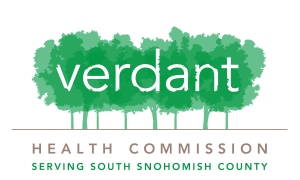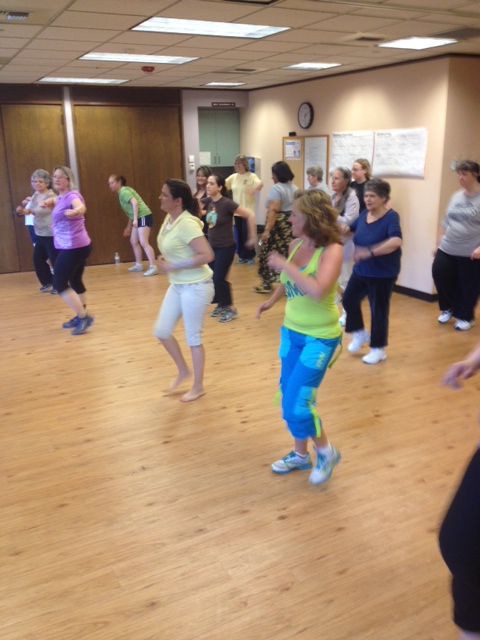Welcome to week 10 of the BetterU Challenge! (New here or want to find out more about this program? Jump back to the week 1 information here!)
Special thanks to Marni Hughes and Q13 Fox News – they are helping spread the word about the Go Red BetterU program! We are looking to help YOU participate right along with us. Are you going to join in on the BetterU program with us? If so we are honored to have you here! Leave messages below to say Hi, ask questions and shout it out that you’re doing the #GoRedBetterU program on Twitter, Facebook, Instagram, Vine and more!
Here is the link to the segment on Q13 news with from May 20, 2014. Chef Kirsten discusses the BetterU program information focusing on diabetes management and prevention. She’ll be making a delicious heart-healthy apple crumble dessert! Catch up with Shirley and Kristi this week as well! Here (to be updated after airing May 29) are some clips from their video diaries. Here is the recipe for Chef Kirsten’s healthified pizza night ideas from the segment on Q13!
Week 10
What is your family history?
Major risk factors: those that research has shown significantly increase the risk of heart disease. The more factors you have, the greater your chances of developing it. Number 3 is the genetics. The first three risk factors we cannot change. The rest we can.
Non-Modifiable – these risk factors cannot be changed:
- Age – As we get older, our risk for heart disease increase. From the AHA: About 82 percent of people who die of coronary heart disease are 65 or older. At older ages, women who have heart attacks are more likely than men are to die from them within a few weeks. From the NIH: This is in part due to the slow build up of plaque inside your heart arteries, which can start in childhood. Before age 55, women have a lower risk for heart disease in part due to estrogen. After the age 55, the risks go up for women and men. A large part of this increase as we age is also from the increase in other risk factors, below.
- Gender – From the AHA: Men have a greater risk of heart attack than women do, and they have attacks earlier in life. Even after menopause, when women’s death rate from heart disease increases, it’s not as great as men’s. *Heart disease still kills 1 in 3 women, and 1 in 3 men.
- Family history – From the AHA: Children of parents with heart disease are more likely to develop it themselves. African Americans have more severe high blood pressure than Caucasians and a higher risk of heart disease. Heart disease risk is also higher among Mexican Americans, American Indians, native Hawaiians and some Asian Americans. This is partly due to higher rates of obesity and diabetes. Most people with a strong family history of heart disease have one or more other risk factors. Just as you can’t control your age, sex and race, you can’t control your family history.
Modifiable – Any person can make changes to these risk factors, even modest improvements to your health will make a big difference. We’ve been focusing on how to help create positive change in all of these areas through the BetterU program:
- High blood cholesterol
- High blood pressure
- Physical inactivity
- Obsesity and overweight
- Smoking
- Diabetes
“Am I making an effort or making excuses?”
I grew up with a family history of heart disease. I always heard the phrase “It’s how we all are, we have a high rate of heart disease.” Genetics do play a role in determining your risk factors for heart disease, stroke and your health in general. Some of us are genetically predisposed. Do you have a family history of these health issues in family members that are the pictures of health, or perhaps born with heart conditions? Then living a healthy lifestyle is extremely important. Heart disease may be in your genes, but healthy habits can help you and your family avoid the risks.
More often than not, a family history of heart disease, stroke and other health issues come from an unhealthy lifestyle that is being handed down generation to generation. Do you have a family history of these health issues in family members that may be overweight or obese, smokers, eat an unhealthy diet, have lack of exercise or have stressful lives? Then living a healthy lifestyle is extremely important. I know this is the case for me.
When the phrase “It’s how we all are, we have a high rate of heart disease.” was made, it was almost as an excuse for “how we were”: overweight, living an unhealthy sedentary and high stress lifestyle. Dr. Siecke made that point in week 2 when introducing the topic, I mentioned that my family had a large rate of high cholesterol. He asked “do they also have a high rate of obesity and eating unhealthy?” I, like many Americans, had previously used this as an excuse for how I was, almost accepting my fate that I would too get heart disease and that it was something I couldn’t control. My health and the health of my family was largely under our control. We just had to make some lifestyle changes.
Common excuses – These are the top barriers named from a recent survey of visitors to the American Heart Association heart.org website:
- Costs too much to eat healthy” – Think again! Here are some tips to help you save money and time: heart.org/healthytips and Week 2 on the blog: https://myheartmylifemywalk.wordpress.com/2013/04/17/betteru-week-2-information-and-action-steps/
- “Don’t want to stop eating the foods I like” – Then don’t! Just find healthy ways to prepare them. Check out http://www.heart.org/recipes for inspiration!
- “Don’t like exercising” – Keep trying! Anything is better than nothing and continually work towards your goal of 150 minutes of moderate activity per week.
- “Too busy taking care of others to take care of myself” – To do our best for our loved ones, we must make an effort to be in the best possible health ourselves. Check out: http://www.heart.org/caringforyourself
- “Don’t really have time to exercise regularly” – Don’t worry! 10 minutes, 3 times a day is all it takes!” *From Chef Kirsten: This is how I reduced my modifiable risk factors and helped me lose over 100 pounds!* See: heart.org/take10
- “I don’t really know how to take care of my heart” – The BetterU program book and blog are giving you all of the information you can use to take care of your heart! The AHA website also has all of the heart-health information you need: http://www.heart.org/conditions. Also back to those Simple 7! http://www.Heart.org/makinganeffort
If I have a family history, what can I do about it?
According to the AHA: Your family history provides a picture of the environment and genetics in place when these diseases occurred. “You can’t counteract your genetics,” Dr. Kraus said, and so if you have a history you must do what you can to change your environment. That means lowering your risk by changing behaviors that can increase your chances of getting heart disease or stroke. “It’s good, healthy living – the more that can be ingrained in your family, the more impact it has,” Dr. Kraus said. “A patient should encourage better eating habits, physical activity and eliminating smoking.”
Being a part of the BetterU health challenge and implementing the tools and knowledge into your new healthy lifestyle means YOU are reducing your risk factors! According to the AHA: Just because your family has a history of cardiovascular disease, does not mean that you will certainly have the same diseases, it just means that you are more likely to have them. Disease is not imminent, and your health can be controlled by making lifestyle changes.Even modest improvements to your health will make a big difference. Implement a new action step from the BetterU program every week, or improve upon them continually. You are doing a wonderful job at lowering your risks for heart disease by continually improving your lifestyle!
Make health YOUR family’s priority: Let’s start creating new healthier branches on the family tree!
- Put your health first. Many women use the excuse of putting the needs of their family first as a way to rationalize not making healthy choices. Or, they simply don’t think about themselves at all. It is important that family members see you taking time to exercise or slowing down to enjoy a healthy meal. Remember, you cannot take care of others without taking care of you.
- Be a role model. Like it or not, your habits influence your family and friends. Make a commitment to do the health habits that you want to see in your family. When it comes to health, it is important to practice what you preach. If it’s better for you, it’s better for your family.
- Become a heart-healthy family. Incorporate the following activities into your family’s schedule:
- Set aside time for everyone to get moving together, take walks, ride bikes or garden.
- Limit screen time. Unplug from computers, phones, television and video games.
- Involve all family members in planning and preparing meals. Try new recipes and modify old favorites to be heart-healthy.
- Make mealtime family time. Focus on being together and encourage conversation. Set an example of eating slowly and with awareness. Everyone can develop good eating habits together and the quality time with the family will be an added bonus.
- Find fun ways to educate kids about heart health. Incorporate health into vocabulary words, science projects, crafts… the possibilities are endless.
- Ensure that each family member receives good healthcare including preventive exams and check-ups.
- Get involved. The Heart Walk, Jump Rope for Heart and other active fund-raising events provide good opportunities for families to practice heart-healthy behaviors and support education and research on heart disease and stroke.
- Join the American Heart Association in their efforts to combat childhood obesity. Learn more about the Alliance for a Healthier Generation (https://www.healthiergeneration.org/) to help kids and families get healthy.
For more information about family history, head over to the AHA sitehttp://www.heart.org/HEARTORG/Conditions/More/MyHeartandStrokeNews/Family-History-and-Heart-Disease-Stroke_UCM_442849_Article.jsp.
Notes from the meetings:
This week the ladies are having a private CPR lesson (not certification) from the firefighters from the Lynnwood fire department.
Did you know that 80% of sudden cardiac arrests happen at home? So you are most likely to use CPR on a family member or loved one.
To get a refresher on how to perform CPR yourself, or to teach your children, including how to get certified please click over to learn more from the American Heart Association.
Have a wonderful week and congratulations on Week 10 towards a BetterU!

Special thanks to our sponsors:






